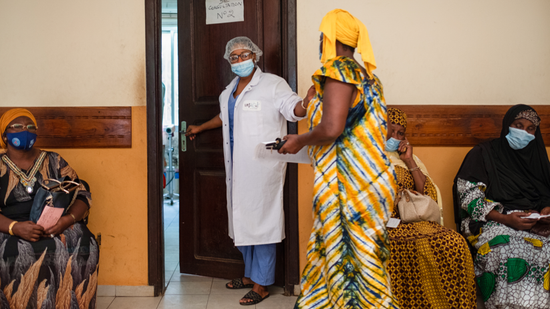
Health inequities exist in all populations. Where the required data are available, monitoring can be done to measure inequalities, make comparisons between populations, and track changes over time - all with the broader aim of equitably strengthening health systems and improving health and well-being for all. This course is a general introduction to health inequality monitoring and serves as an entry point for a series of courses on the foundations of health inequality and monitoring.
Photo credit: WHO / Blink Media - Ricci Shryock
Язык: English
Health topic
Информация о курсе
Overview: Now more than ever, many health inequalities across and within countries are recognized as preventable, unfair and unacceptable. Health inequality monitoring is an essential starting point for building more effective and more equitable policies, programmes, and practices. Monitoring inequalities is necessary to characterize current realities, evaluate the impact of actions, and indicate where changes are still needed. This course helps learners to become familiar with the basics of health inequality monitoring, why it is important and how it can be carried out. No prior knowledge about health inequality or experience conducting health inequality monitoring is required. The target audience for this course includes monitoring and evaluation officers, health programme managers and policy makers. The course is also suitable for anyone with a general interest in the topic of health inequality monitoring.
This course is part of the Health Inequality Monitoring Foundations series, featuring the following courses: (1) Overview, (2) Data Sources, (3) Health Data Disaggregation, (4) Summary Measures of Health Inequality and (5) Reporting.
Course duration: Approximately 1.5 hours.
Certificates: A Certificate of Achievement will be available to participants who score at least 80% of the total points available in the final assessment. Participants who receive a Certificate of Achievement can also download an Open Badge for this course. Click here to learn how.
Что вы узнаете
- Terminology pertaining to health inequality monitoring and key concepts that intersect with monitoring
- Considerations for conducting health inequality monitoring in different contexts, such as its importance and purpose, when and by whom it should be conducted, and how it can be aligned with other health sector activities
- The five steps of the cycle of health inequality monitoring
- How to access and use WHO resources to strengthen capacity for health inequality monitoring
Содержимое курса
Introduction:
This introduction module sets the scene for the course by defining health inequality monitoring, providing illustrative examples of health inequalities in different contexts and introducing the forthcoming modules.Module 1: Key concepts and terminology:
Module 1 covers key concepts and terminology related to health inequality monitoring. By the end of this module, you will: define terms related to health inequality monitoring; differentiate between health inequality and health inequity; describe key concepts that intersect with health inequality monitoring activities; and describe how equity is relevant to the Sustainable Development Goals and related principles.Module 2: Situating health inequality monitoring:
Module 2 addresses general considerations for undertaking health inequality monitoring activities across different contexts and health topics. By the end of the module, you will discuss the importance and purpose of health inequality monitoring, and describe who is involved, when it should be done, and how it is aligned within health information systems and other health sector activities.Module 3: Cycle of monitoring:
This module covers the five-step cycle of health inequality monitoring. By the end of this module, you will describe the five steps of health inequality monitoring and their sub steps. You will describe the cyclic and iterative nature of health inequality monitoring.Module 4: WHO resources:
This module outlines existing WHO resources for health inequality monitoring, and how they can be accessed and used to deepen engagement in the subject area. By the end of the module, you will list the WHO resources for health inequality monitoring.Final assessment
Записаться на этот курс
Требования для получения сертификата
- Чтобы получить сертификат об окончании курса, участникам необходимо набрать не менее 80% от максимального количества баллов за все задания на оценку.
- Gain an Open Badge by completing the course.